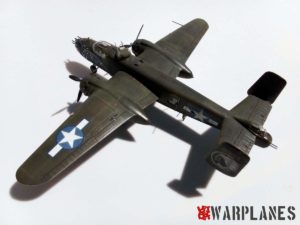Eduard Nieuport Ni-17 8051 ProfiPack

Eduard Nieuport Ni-17 8051 ProfiPack
[dropcap]E[/dropcap]duard brought out a great surprise for all fans of the First World War Aviation. I’m talking about a new old edition in a box number 8051 marked orange as all their Profi packages. There is not much to about this model which is not already well-known to the broad modelling audience, but I will recap some of the familiar facts and add some new information. The instruction sheet is standard for Eduard Profi packages, full colour spreading on six pages. The model is given on three grey plastic frames and, just like the previous editions, the cast is perfect without any casting remnants or pin-marks. Kit parts fit more than good, there are just a few puttying interventions necessary on the joints between the lower wings and the fuselage, as well as on the parts of the fuselage behind the engine on the bottom side. Of course, there is also the transparent part packed in a separate wrap. A novelty in this package is a sheet of etched parts, which offers all those tiny elements which will add to the beauty of the final result of putting this model together.
The last, but not the least important part of the box are masks printed on the distinctive Eduard high-quality paper for wheel hubcaps, as well as for the windshield. Finally, for the end, there is a sheet with decals, which is quite lavish, with markings for as much as six airplanes:
•Ni-17, N1887, Stg. Edward Hinkle, Esc. N124 Lafayette, Western Front, Spring 1917
•Ni-17, Lt. Marius Ambrogi, Esc. N90, Western Front, 1917 to 1918
•Ni-23, B‘3474, Capt. William C. Campbell, No. 1 Sqn RFC, Western Front, July 1917
•Ni-23, B‘3578, Lt. Laurence Kert, No. 29 Sqn RFC, Western Front, November 1917
•Ni-17, N3139, ten. Fulco Ruffo di Calabria, 91a Squadriglia, Italian Front, Spring 1917
•Ni-17, N3139, ten. Fulco Ruffo di Calabria, 91a Squadriglia, Italian Front, Spring 1917

Conclusion:
The Eduard edition of Niueport Ni-17 model is always a joy for the aficionados of this hobby, especially when richly equipped as this one. As a special treat, all defects in the etched parts which were common in the previous editions of this already classical model appearing in the landing gear, the seat and the Lewis wing machine gun have been removed.
General characteristics:
Crew: one
Length: 5.80 m (19 ft 0 in)
Wingspan: 8.16 m (26 ft 9 in)
Height: 2.40 m (7 ft 10 in)
Wing area: 14.75 m² (158.8 ft²)
Empty weight: 375 kg (825 lb)
Loaded weight: 560 kg (1,232 lb)
Powerplant: 1× Le Rhône 9Ja 9-cylinder rotary engine, 82 kW (110 hp)
Performance
Maximum speed: 165 km/h (90 kn, 103 mph) at sea level
Endurance: 1.75 hours
Service ceiling: 5,300 m (17,390 ft)
Rate of climb: 11.5 min to 3,000 m (9,840 ft) ()
Wing loading: 37.9 kg/m² (7.77 lb/ft²)
Power/mass: 0.15 kW/kg (0.09 hp/lb)
Armament
Guns:
(French service) 1 × synchronised Vickers machine gun
(British service) 1 × Lewis gun on Foster mounting on upper wing
Rockets: 8 Le Prieur rockets
(A few individual aircraft had both guns)
Box:
•Famous French WWI fighter plane in French, RFC and Italian service
•6 attractive marking options
•Colour Photo-etched set
•78 plastic parts
•Express mask
Nenad Blagojevic
Sample kit is provided by Jan Zdiarsky from Edurd




























